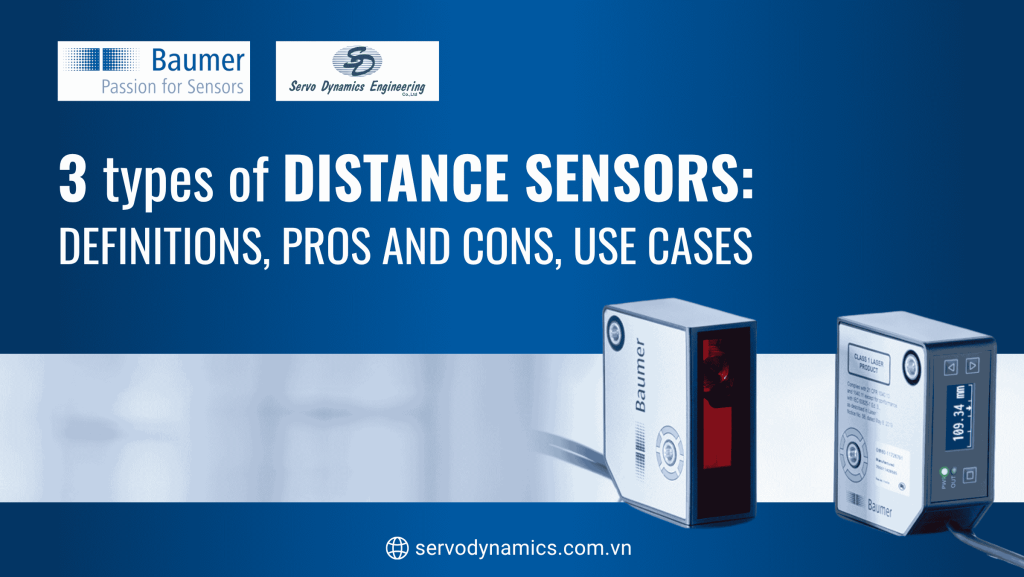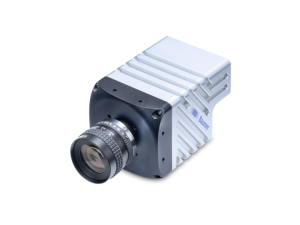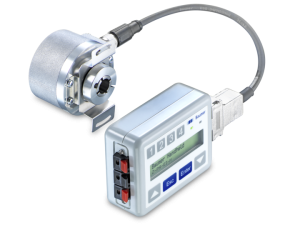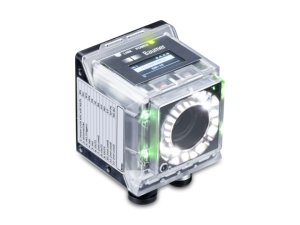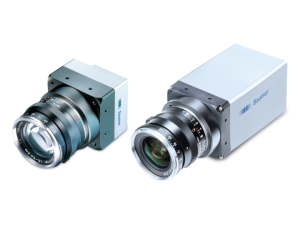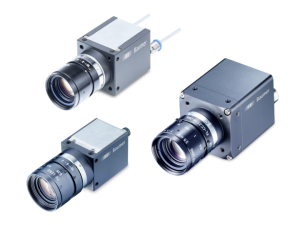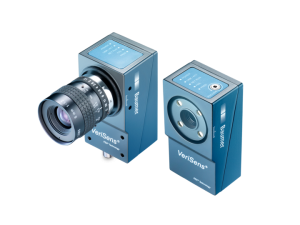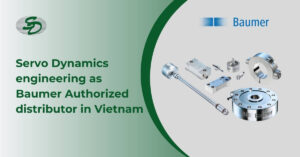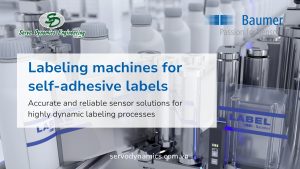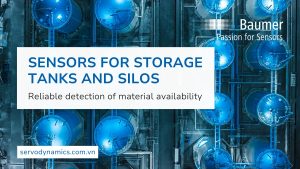Consulting
What is a Distance Sensor? Principle, Structure, & Detailed Applications
A Distance Sensor is one of the core components of any automation system, robotic platform, or smart device. They act as the “eyes,” helping machines determine position, measure dimensions, and control the movement of objects in space.
If you are looking to understand what distance sensors are, their operating principles, or the most common types, this article will provide the most comprehensive overview.
I. Distance Sensor Overview
Definition and Core Function
What is a Distance Sensor?
At its core, a Distance Sensor is an electronic device designed to measure the distance between the sensor and a target object without physical contact.
In specialized terminology, they are often referred to as Distance Measuring Sensors. The precise English term is Distance Sensor, which makes it easy for you to search for global technical information.
Function and Utility
The structure of a distance sensor allows them to perform many important functions. Their core functions include:
- Precise Measurement: Determine the distance from the sensor to the object in specific measurement units (mm, cm, m).
- Obstacle Detection: Ensure safety in machinery and robot operation.
- Position Control: The main utility of the sensor is to control the stopping or movement position of conveyor belts and robotic arms.
The primary function of a distance sensor is to convert physical information (distance) into an electrical signal (Analog or Digital) that the control system can process.
Basic Operating Principle and Structure
General Operating Principle (Transmit/Receive Signal Principle)
Although there are many types, the operating principle of all distance sensors relies on the principle of emitting a form of energy (ultrasonic waves, laser beams, infrared light) and calculating the time, intensity, or reflection angle of that energy when it encounters an object.
- Time-of-Flight (ToF): Calculates distance based on the time the signal travels forth and back.
- Triangulation: Calculates distance based on the reflection angle and sensor position.
Detailed Structure (Sensor Module)
A basic distance sensor module typically includes:
- Transmitter: Emits the energy signal (ultrasonic, laser, infrared LED).
- Receiver: Captures the reflected signal from the object.
- Processor: Calculates data (time/intensity) to convert it into a distance value.
II. Distance Sensor Classification by Technology
To answer the question of which distance sensor types are currently in use, we need to classify them based on measurement technology:
1. Ultrasonic Sensors
- Principle: Uses ultrasonic waves (frequency higher than $20\text{ kHz}$). It emits an ultrasonic pulse and measures the time of the reflected wave.
- Advantages: Durable, unaffected by the object’s color or transparency.
- Applications: Distance measurement in storage tanks, obstacle detection in robots, and general-purpose distance sensing.
- Typical Model: HC-SR04 distance sensor.
2. Laser Distance Sensors
- Principle: Uses high-intensity laser beams, often employing ToF technology or optical triangulation.
- Advantages: Extremely high accuracy, long measuring range (e.g., $10\text{m}$ distance sensors and beyond).
- Applications: Precise industrial measurement, crane positioning.
- Related Keywords: Laser distance measuring sensor, distance laser sensor.
3. Infrared Distance Sensors
- Principle: Operates based on the change in the reception angle of reflected infrared light (Optical Triangulation).
- Advantages: Low cost, compact size.
- Applications: DIY projects, line-following robots.
- Typical Model: Sharp GP2Y0A21YK0F.
4. Radar Sensors
- Principle: Uses radio frequency waves to measure distance and velocity.
- Advantages: Ability to penetrate dust and fog, works well in harsh environments.
- Applications: Primarily in heavy industry, traffic monitoring, and self-driving cars (radar distance measuring sensor).
III. Real-World Applications
Applications of Distance Sensors in Various Fields
In Industry and Automation
- Quality Control: Measuring material thickness and product dimensions.
- Logistics & Warehousing: Forklift positioning, measuring material levels in silos.
Businesses often use industrial distance sensors or industrial distance measuring sensors from major brands to ensure reliability and accuracy.
In Transportation (Automotive)
Automotive distance sensors are an indispensable system in modern vehicles, from parking assist to Adaptive Cruise Control (ACC) systems. Major car manufacturers like BMW and Mazda (CX-5) equip their vehicles with these types of sensors.
Specific Applications
- Security: Detecting obstacles in restricted areas using distance sensors.
- Environment: Designing waterproof distance sensors for outdoor or underwater applications.
IV. Technical Guidance and Selection
Technical Selection and Setup
Distinguishing Analog and Digital Signals
- Digital Signal (On/Off): Only indicates whether the object is within the detection range.
- Analog Signal (4-20mA, 0-10V): Provides a continuous distance value.
Analog distance sensors (e.g., $4\text{-}20\text{mA}$ distance measuring sensors) are preferred in applications requiring high accuracy and integration into PLC/DCS systems.
Integration with Arduino and Programming
For personal electronics projects, using Arduino distance sensors is very common.
- Programming: You need to refer to the distance sensor code (library) suitable for the sensor type you are using (e.g., HC-SR04).
- Connection: Understand how to connect the distance sensor to the Arduino board (VCC, GND, Trig, Echo pins).
Key Technical Specifications
When selecting, pay attention to the measuring range and resolution:
- Measuring Range: From $1\text{m}$ distance sensors for close-range applications, to $10\text{m}$ distance sensors for industrial use.
- Accuracy and Repeatability.
The stated Sensing Distance of the sensor must be appropriate for practical requirements.
Popular Product Lines and Brands
Leading Industrial Sensor Brands
These companies are known for their durability, continuous operation capability, and wide measuring range:
- Baumer: Known for high-precision measurement solutions, especially specialized laser sensors for harsh environments and absolute accuracy requirements.
- Sick: Offers a wide range of Sick distance sensors (laser, ultrasonic) with smart features and industrial network connectivity.
- Omron: Omron distance sensors are widely used in assembly and inspection lines, known for their versatility and easy installation.
- Keyence: Stands out with high-speed laser sensors and ultra-fine resolution, often used in demanding quality inspection applications (Keyence distance measuring sensor).
Typical Models for Learning and DIY
- HC-SR04: The cheapest and easiest-to-use ultrasonic sensor.
- VL53L0X: Ultra-small Time-of-Flight (ToF) laser sensor, offering higher accuracy than the HC-SR04 at close range.
- Sharp GP2Y0A21YK0F: Analog infrared sensor, providing an output voltage that changes with distance.
V. Troubleshooting and Conclusion
Common Troubleshooting and Notes
Basic Troubleshooting
Common errors include:
- Signal Noise: Occurs with laser distance sensors due to poor reflection from the object’s surface or an obstructing object. It is necessary to clean the sensor and adjust the mounting angle.
- Software Error: Check the distance sensor code or the library being used.
Advice for Use
- Installation Position: Ensure the sensor is mounted firmly to prevent vibration.
- Environmental Check: For ultrasonic sensors, air temperature can affect the speed of sound propagation, causing measurement deviations.
VI. Product Suggestion: Baumer’s OM60 Laser Distance Sensor
If you are looking for a leading laser distance sensor, Baumer’s OM60 is the perfect choice. This sensor series is engineered for high performance, accuracy, and reliability, making them ideal for demanding applications in automation, robotics, and industrial measurement.
- Extremely Precise Measurement: Achieves accuracy up to $\pm 3\ \mu\text{m}$ and repeatability down to $0.12\ \mu\text{m}$.
- Long Measuring Range: Measures distances up to $1700\ \text{mm}$, even on dark or glossy surfaces.
- High-Speed Response: Fast update rate up to $5\ \text{kHz}$ for real-time monitoring of moving objects.
- Surface Independent: Provides consistent results across various materials and textures.
- User-Friendly Setup: Comes with an intuitive web interface or the Baumer Sensor Tool for easy configuration.
- Flexible Connectivity: Supports modern protocols such as IO-Link, serial, and Ethernet.
Whether you need precise part positioning, real-time quality control, or 3D surface measurement, Baumer’s laser distance sensors provide a complete and scalable solution.
Conclusion
Distance sensors are an indispensable part of the modern technological world, helping us achieve significant strides in automation, safety, and efficiency. Choosing the right type of sensor – whether it’s ultrasonic for simple applications, infrared for household devices, or laser (LiDAR) for superior accuracy and long range – will determine the success of your project and system.
With detailed information on the operating principles, pros, cons, and applications of each type of distance sensor, we hope you now have a clearer view to make an informed decision.

✅ Looking to learn more?
Join Baumer Live Webinar on July 15, 2025: “Precise Distance Measurement – Technologies, Applications & Innovations”. Get expert insights into sensing technologies—including radar, inductive, optical, and especially laser distance sensors—with real-world applications in quality control, dispensing, and wood processing.
About Servo Dynamics – Authorized Distributor of Baumer in Vietnam
Servo Dynamics Vietnam is the official authorized distributor of Baumer, a leading global brand in sensor and automation technology. With a strong local presence and technical expertise, Servo Dynamics provides Vietnamese industries with access to Baumer’s high-precision sensors, including laser distance sensors, encoders, and vision systems. We are committed to delivering innovative solutions, expert support, and fast service to help businesses optimize performance and productivity.
Explore Baumer Products
Learn more

 Tiếng Việt
Tiếng Việt
